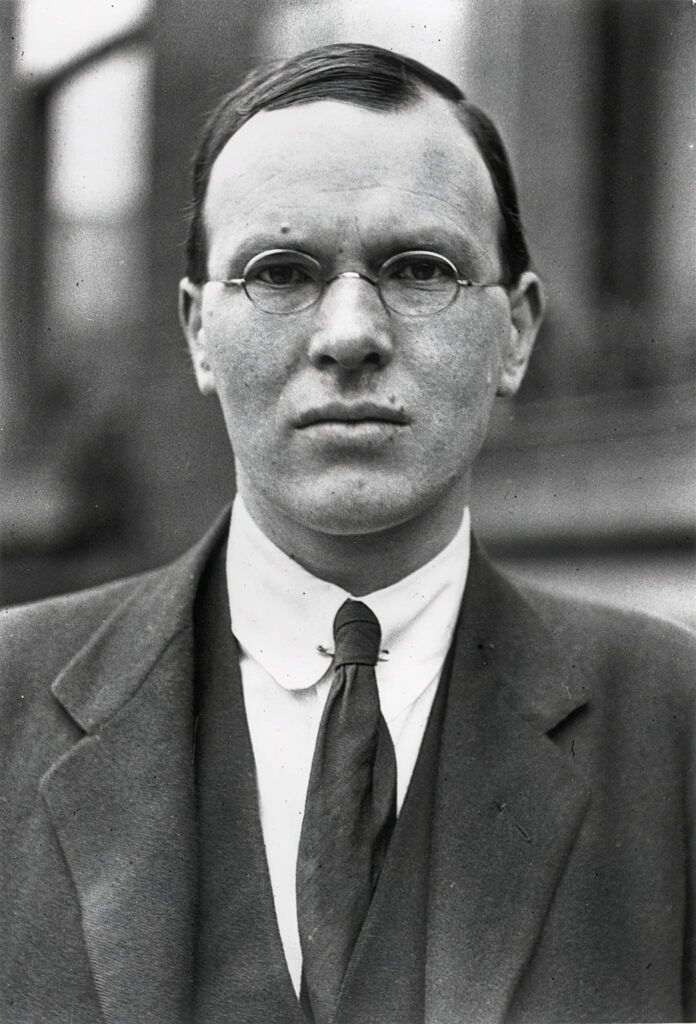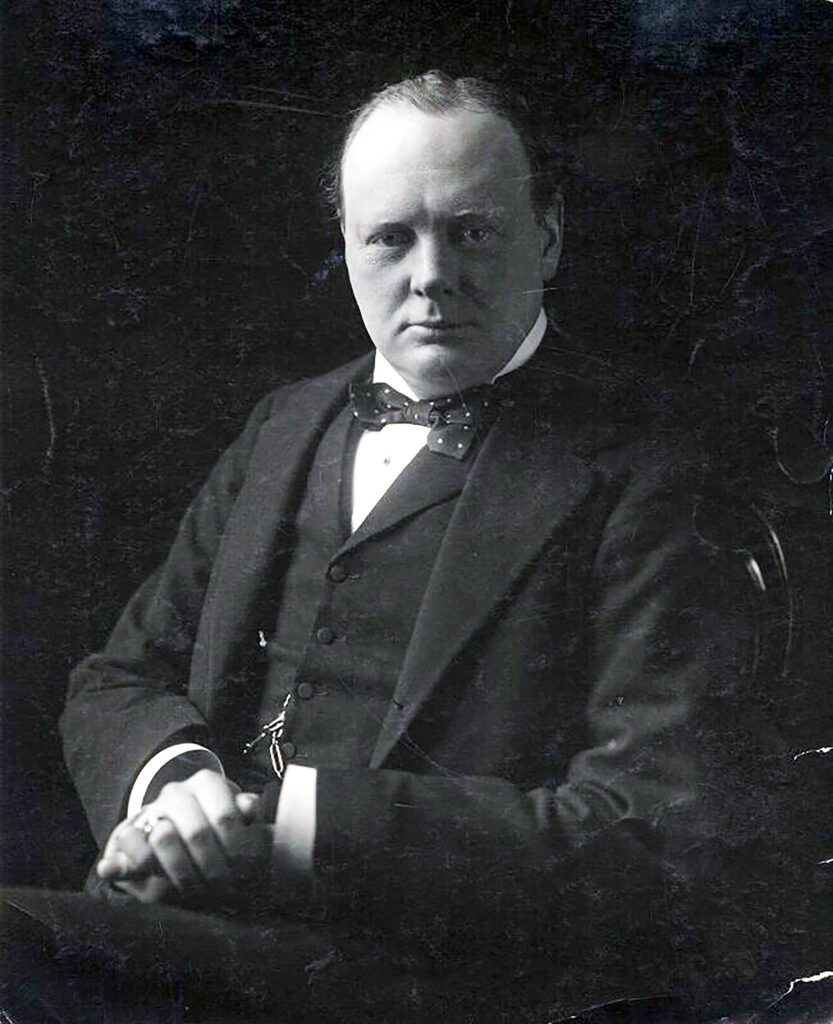By Mark Stocker

A long-overlooked aspect of the 1928 Irish Free State coinage was how the new, precarious, state could benefit from seigniorage. This denotes the profit made by a government issuing currency through the difference between its face value and lower production costs. Only higher-value silver coins (half-crown, florin and shilling) mattered here. W.T. Cosgrave’s ministry trod typically carefully: its prudent finance minister, Ernest Blythe, hardly wished to flood Ireland with coinage, a recipe for hyper-inflation (viz. contemporary Germany and, much later, Zimbabwe). The immediate problem was what to do with the currently circulating British coins, significant quantities of which were allegedly hoarded during the First World War and the Troubles. Irish banks held many more as backing for their note issues. A new national coinage would risk rendering its old counterparts instantly anachronistic. Withdrawing the latter seemed the obvious policy, but the government was obliged to pay holders face value, thereby compromising and potentially reversing seigniorage profits.
A MORAL OBLIGATION?
In January 1922 Otto Niemeyer, controller of finance at the British Treasury, anticipated that the nascent Irish Free State would expect his government to bear the entire cost difference between the face value of the surplus coin and its bullion value. Robert Johnson, deputy master of the Royal Mint, concurred: ‘It would be a matter for agreement between the two Governments concerned what share of the charge should be borne by the Free State but it would be surprising if they were any more disposed to bear the costs of any part of that operation than they have been to bear the costs of withdrawing troops from Southern Ireland’. Although Niemeyer realised that the British Exchequer was morally obliged to incur at least some of the costs, he steadfastly attempted to prevent Ireland from benefiting from the operation. This is understandable, given the Irish government’s opportunism. It stood to profit twice over: from seigniorage of the new coinage and from making the British pay face value for the old. Any other government undertaking such an exchange would have to take the hit on melting down the old coinage and redeeming its bullion value.
Critical Irish political matters took priority until April 1925, when Niemeyer told Joseph Brennan, secretary of the Department of Finance, that Britain would not repurchase the old coinage, warning that a new one was a commercial mistake. If its introduction was considered imperative, Niemeyer counselled its gradual circulation to meet demand. But Brennan and Blythe were committed to a full and timely new issue, prompting Niemeyer to review its implications for Britain. These were potentially serious: if Ireland got no joy, she could well attempt to dump the surplus coin, probably via Northern Ireland. This would need to be countered by emergency legislation prohibiting such imports, easier to enforce on banks than on individuals. Britain already had ample circulating silver worth £5.5 million and needed no surplus coin, estimated at £1.5 million by the Irish government and double that by the British. But Ireland faced potential problems in turn. With banks unable to dispose of British silver, a scenario might arise whereby Irish coins alone were accepted at face value, whereas British silver would only be legal tender at (say) a discount of a penny in a shilling below face value. The disruption caused by such methods of forcing out the old coin—less drastic and adversarial than dumping—would likely, the Treasury concluded, give Ireland ‘a powerful motive to arrive at an agreement with the British government’.
This was optimistic. In the Coinage Bill Dáil debates of early 1926, the new coinage was announced and demonetisation of British coin proposed. Bryan Cooper pooh-poohed Blythe’s forecast £600,000 profit, as this depended on the British government being ‘either the most philanthropic or the most foolish of mankind’ and ‘obliging enough to say these shillings which contain 6d worth of silver contain a full shilling’s worth and take them at their face value’. Andrew Jameson warned that without a deal with Britain the coin-holding public would pour into the banks ‘about £1 million in coins which, being useless to them, would spoil the credit of the country’. Blythe was unmoved, probably regarding this relatively modest figure as a storm in a teacup. He doggedly insisted that repurchase was an obligation that Britain must honour. If she repudiated the coins at face value, ‘it would be very like dishonouring a cheque’, adding that Irish people would not understand why coins bearing King George V’s head were apparently only worth their bullion value to the British. This was highly ironical given that any new Irish designs would almost certainly eliminate that head.

ENTER CHURCHILL
The chancellor of the Exchequer, Winston Churchill, would have followed the debates with irritation. Although he had famously bonded with Michael Collins in the 1921 Treaty negotiations, his subsequent move from Liberal to Conservative and Unionist affiliations, and a belief that Ireland had handsomely benefited from wiping out its share of the British national debt in the Financial Agreement of 1925, surely made him consider this to be one impertinent demand too many. Ronald McNeill—his erstwhile Unionist adversary and now colleague as financial secretary to the Treasury—declared that Ireland should ‘be willing to pay a considerable price for getting rid of the King’s head which is their only real object’. Churchill himself called the proposed new coinage ‘a mere grimace for indulgence for which they should suffer every reasonable inconvenience’.

In March 1926 Churchill told Blythe that the surplus silver in Britain prevented any buy-back at face value. Blythe countered that he would then get the coin dumped, to which Churchill tersely replied ‘embargo’. Did he envisage a damaging trade war, like that between Britain and Ireland in 1932–8? The sums at stake made this improbable. Far likelier was his intention to enact legislation banning British coin imports, declaring that ‘It seems desirable that the Irish should pay for their follies’. Meanwhile, the Irish government made further plans for the coinage and formally requested the Royal Mint to undertake its manufacture. Johnson responded enthusiastically to new work for the Mint, graphically contrasting with his attitude in 1922, when he worried lest outlaws laid ‘violent hands on all the … British silver now circulated in Ireland’. Indeed, Johnson persistently challenged Churchill and Treasury alike, claiming that the British government was bound, ‘however desperately we may struggle to agree, to take back and demonetise the imperial silver circulating in that country on the same terms as we have already agreed for the other self-governing Dominions of the Crown’.
DOMINION PRECEDENTS
Australia (1910) and South Africa (1922) had both received face-value compensation with the introduction of their respective national coinages. Thomas Mohr has observed: ‘The Irish insisted that … these Dominions must be treated as precedent and that the same facility must be made available’ to them. Churchill rejected this argument, claiming that preferential treatment for distant dominions involving relatively small quantities of coin was one thing, whereas Ireland was a near neighbour and, though he left this unspoken, had recently and acrimoniously left the United Kingdom. Even supporters of the 1921 Treaty were uncomfortable with Ireland having Dominion status. The word itself was demeaning, reflecting the oath of allegiance to the sovereign that had aggravated bloody divisions over the Treaty. Instead, Cosgrave’s ministry far preferred to regard the Irish Free State as the successor to the United Kingdom over its 26-county realm. Nevertheless, when it suited them, as here, they shrewdly played the Dominion card. Treating Ireland differently from Australia and South Africa would, Cosgrave argued, constitute ‘unfair and unexpected discrimination against us’.
In February 1927 the Irish Free State confirmed its initial requirement for £750,000 in coin, but the situation was sufficiently delicate for the Treasury to reject Johnson’s wish to resume direct Mint negotiations with the Irish government. This was happening when, in the absence of legislation, the National and Provincial Banks vainly attempted to offload amounts varying between £100,000 and £200,000 of silver coin, even resorting to direct offers to the Mint itself when rebuffed by the Bank of England and Barclays. This remained an open secret in Ireland, with no press coverage or Dáil questions, testifying if not to the maturity and responsibility then certainly to the control of the authorities, thereby averting a potential crisis in circulating coinage and the attendant, inevitable public hysteria. Individuals would potentially be hit far less than the banks, and their silver coinage could be immediately utilised in Britain: Augusta, Lady Gregory patriotically loaded her grandchildren, heading for boarding-school there, with it.
‘SIT TIGHT AND LEAVE IT TO THE IRISHMEN’
When his protégé, Percy Metcalfe, was selected to design the new coinage in May 1927, Johnson was determined that nothing should prevent it from materialising. He proposed ‘a kind of bridge to what appears to be an impasse’, allowing Ireland to send surplus silver directly to the Mint and obtain the new supply ‘coin by coin’, free from manufacturing costs. Niemeyer found nothing objectionable in the proposed exchange but nevertheless vetoed it: ‘The right policy is for us to sit tight and leave it to the Irishmen to put forward such proposals as they like’. Signs of a crack in the ‘no obligation to purchase’ line came in autumn 1927, when the principal assistant to the Treasury, Frederick Phillips, suggested that if the Irish government itself took the old coin from their banks at face value, a return gesture would be necessary, proposing a paltry concession of £50,000.
Early 1928 witnessed greater urgency in the situation, with the imminence of the new coins and mounting concerns about a coinage assault via Northern Ireland. In February Phillips, under pressure from Churchill, composed a hard-line ‘head’ (i.e. draft) of a bill, ‘prohibiting importation from a foreign country of the silver coin of the realm and of coins current in a foreign country’. The latter would have outlawed Irish Free State coins in Northern Ireland, but this quick fix foundered on three fronts. Parliamentary counsel objected to incorporating the bill into planned legislation on Northern Ireland banknotes, as this was inappropriate for a measure potentially affecting the entire United Kingdom. Niemeyer’s temporising successor, Richard Hopkins, was convinced that ‘the skies would not fall if British silver came over the border to a limited extent’, which annoyed Churchill, who did not have ‘the slightest intention of helping the Free State out in this matter’. Most crucially, opposition came within the cabinet from Leo Amery, whose portfolio as colonial secretary included the Dominions. Amery circulated a counter-memorandum, regretting that the Irish Free State should not be accorded the same concessions as Australia and South Africa. He was, moreover, ‘particularly anxious to afford no excuse to the Irish Free State for treating the United Kingdom as a foreign country in the ordinary accepted sense of the term’. Notwithstanding sympathy for Churchill’s position, the cabinet sided with Amery. As Mohr suggests, ministers probably ‘concluded that it was not worth jeopardising the Irish Free State’s remaining Imperial links over pieces of silver’.
In the correspondence between Churchill and Cosgrave spanning June and November 1928, just preceding release, the tone is warm, given Churchill’s adversarial attitude and Cosgrave’s pride. Cosgrave reasonably argued that ‘a coinage of our own’ was not a matter of mere sentiment for which the Irish Free State ought to pay a price, as Churchill implied, but a logical consequence of its exit from the United Kingdom and a normal and expected element of new national institutions. Although Churchill resented Cosgrave’s reference to an ‘act of repudiation’, much more significant was his proposal of repurchase by instalment, which coincided with senior Treasury officials’ line of thought. The ensuing discussion involved only the sum of the coinage order, ‘sufficient for the moment if enough were removed to make way for the new issue’, and excluded the considerable balance that Cosgrave envisaged.

‘SQUARING UP THINGS’
When Churchill next met Blythe in January 1929, shortly after the new coinage was released, the occasion was over disputed civil service pensions affected by independence. It made sense to address the larger issue of coinage there and then. Treasury officials set a limit of £750,000 to face-value payments, made in annual instalments of £50,000 over a fifteen-year period. Blythe wheedled a slightly improved deal, involving £50,000 immediately, £100,000 in April 1929 and £60,000 annually for ten years. Amery’s celebrated diary notes the ‘generally friendly atmosphere of the successful negotiations’:
‘Conference at the Treasury between Winston and Myself and [John A.] Costello [attorney general and later taoiseach] first of all on Irish pensioners and then on Irish coinage. Winston began very cleverly by flattering them about their beautiful new coinage then drawing their views on the pensions … As regards coinage we left this after a little preliminary skirmishing to the experts and adjourned to lunch at Kettner’s [Townhouse] where we all had some good talk under the influence of excellent food and drink. In the afternoon we had no difficulty in squaring up things.’
If the ‘means’—a convivial restaurant lunch—seemingly vindicates human reasonableness, what of the outcome? The economist Colm Gallagher asserts that ‘Free State officials may have extracted a reasonably credible win in the old silver skirmish but, arguably, the old oppressor won the long game. The repatriation of a limited sum over a long period … made the demonetisation signalled in the Coinage Act unattractive and, reinforced by continuing efforts to encourage tourism, prevented the state’s own coinage from gaining a circulating monopoly’. Yet precisely through sidestepping demonetisation, the potential crisis of British silver bank holdings was avoided. Furthermore, it was perhaps in Ireland’s best interests to have more blurred lines of demarcation than were ever envisaged in legislation like the 1926 Coinage Act. The Irish state would encourage such blurring, and the operation of coinage arrangements in everyday life—assisted by British tourism—vindicated this over the next 50 years.
Mark Stocker is the author of When Britain went decimal: the coinage of 1971 (Spink/Royal Mint, 2021) and is currently working on a book about the Irish Free State coinage.
Further reading
J. Barnes & D. Nicholson (eds), The Leo Amery Diaries: Volume 1: 1896–1929 (London, 1980).
T. Mohr, ‘The political significance of the coinage of the Irish Free State’, Irish Studies Review 23 (4) (2015), 451–79.
